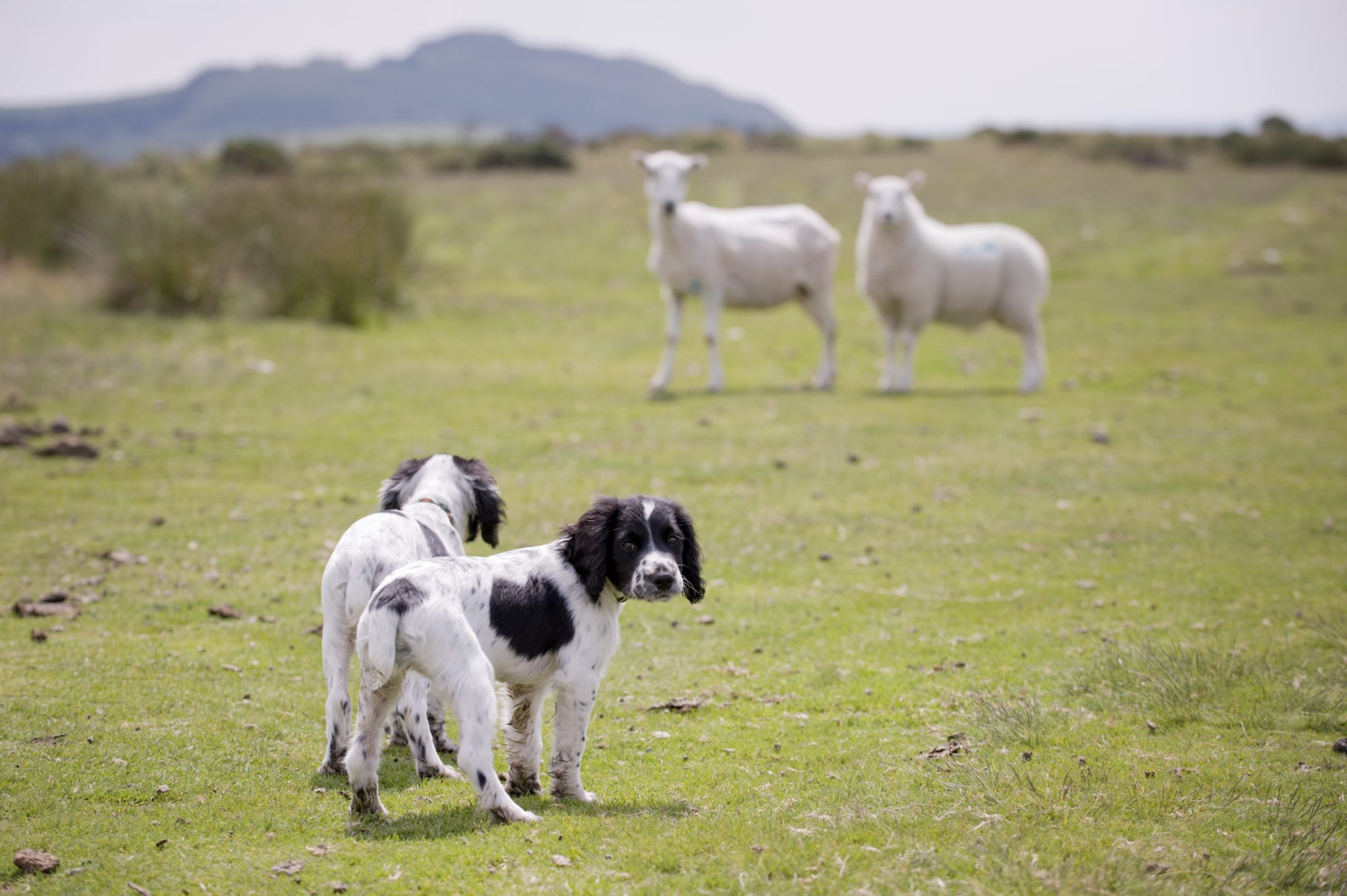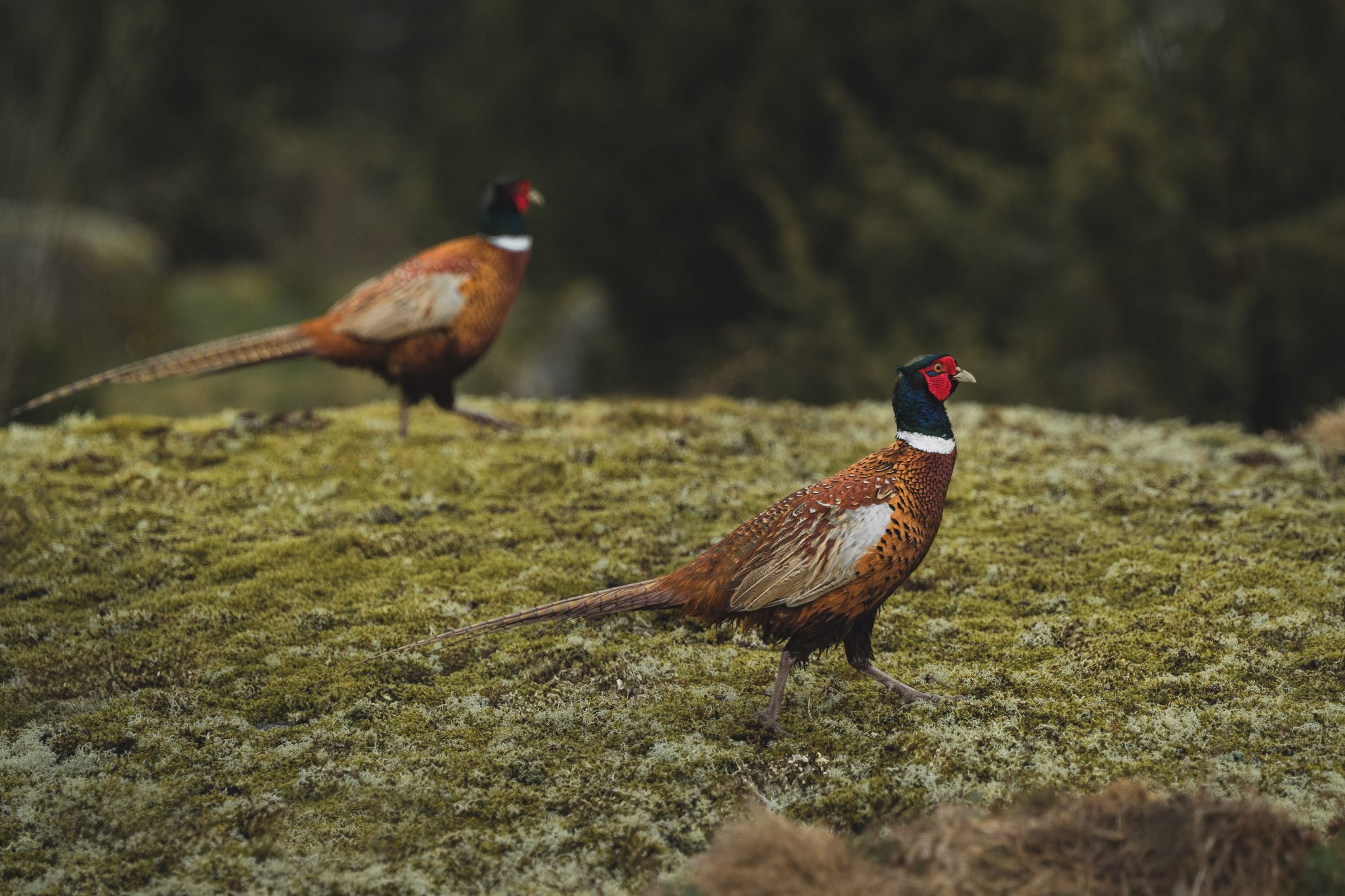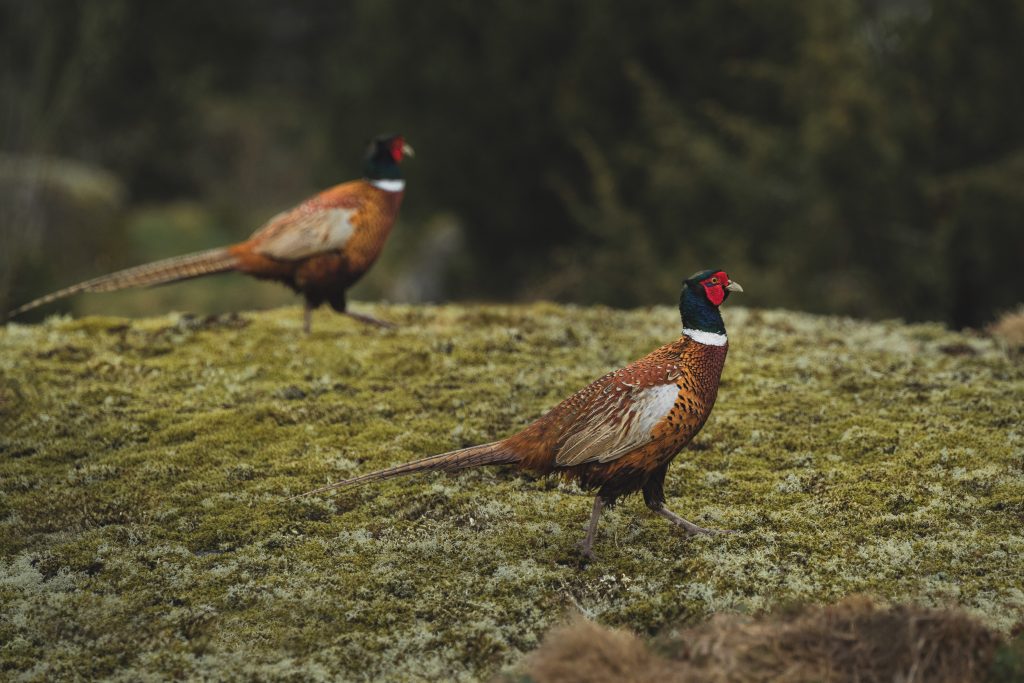Win CENS ProFlex DX5 earplugs worth £1,149 – enter here
DEFRA Review – the facts not the fiction
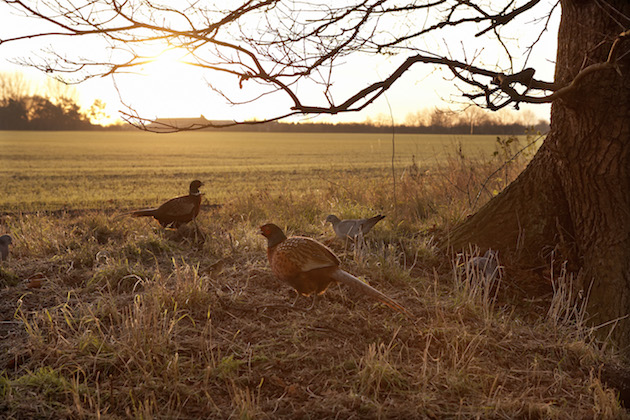 Pheasants, Phasianus colchicus and stock doves, Columba oenasUsd 20 march 13 game rearing
Pheasants, Phasianus colchicus and stock doves, Columba oenasUsd 20 march 13 game rearing
What does the DEFRA review mean for the here and now, what changes are going to take place and who do they affect?
(JM) Reading through the Witness statements published by DEFRA, their legal correspondence with Leigh Day Solicitors and their summary statement, it initially seems that very little has changed for most shoots. There are four headline measures proposed by DEFRA. First, the attention of shooting organisations and Wild Justice, and their various claims of “victory” have focussed on the proposal for a licence to cover releases within and 500m around European Natura 2000 (N2K) protected sites which, according to spatial modelling by the Animal and Plant Health Agency (APHA), is likely to be irrelevant for around 75% of Shoots. Second, for those few shoots that are already releasing birds on SSSI under consent from NE, any new applications or renewals are likely to be met by a much more detailed assessment. Third, NE will be conducting ongoing monitoring at a set of 12 (presumably N2K) sites where gamebirds are being released and their condition will be reassessed, likely with a focus on specifically whether the birds are having an effect. Shoots on those sites are likely to be under intense scrutiny for the next few years. However, the final measure will affect every shoot that releases birds. The Review has revealed what many of us knew: that the Poultry Register, which is currently the only formal data on the numbers and locations of birds being released, is a very poor record. Filling in the Register if you release more than 50 birds is a legal obligation. DEFRA and the APHA who manage the register will make ‘improvements’ to the Register and are likely to focus closely on this in the immediate future. Therefore, all shoots that release birds will be expected to comply and this will mean that all shoots releasing in 2021 will need to ensure that they have registered their birds accurately.

Dr Joah Madden (JM), Associate Professor at the University of Exeter
What are Shoots going to need to do to comply with the new regulations?
(JM) DEFRA and NE are looking more widely at release behaviour and the final legislation will be a result of further studies and investigation. For shoots that currently release birds within N2K & buffer areas, it looks like DEFRA will introduce an interim licensing process for the 2021 season. DEFRA is considering a variety of approaches to this licence, with a study of how well shoots in these areas currently comply with best practice and how local effects may best be mitigated. DEFRA currently prefers the simpler general licence format. DEFRA are considering adding pheasants and red legged partridge to Schedule 9 of the Wildlife and Countryside act which would make their release illegal without a licence. This would only apply to game birds in N2K sites and their buffers. A general licence would be the lightest touch and simplest solution for all, but the witness statements reveal that DEFRA have also considered the use (and costs) of individual licences if it becomes apparent that a general licence approach is inefficient at preventing damage. Therefore, to avoid more complex (and costly) individual licences being imposed, those shoots relying on a GL must be able to demonstrate their compliance with the licence stipulations as I suspect they will subject to detailed monitoring. This situation is also seen with respect to the Poultry Register. If shoots continue to fail to comply, I suspect that it will only get more onerous.
(RD) As yet it is difficult to know exactly what shoots will need to do to comply with the licensing requirements as the conditions have not been worked up yet by DEFRA. We hope that it will be a simple Open General Licence that shoots do not need to apply for. DEFRA will be consulting with the sector in the coming weeks to define the conditions that shoots in or within 500m of EU designated sites will need to operate under. We expect that one of the key conditions will be adherence to GWCT’s sustainable gamebird releasing guidelines. We would welcome this condition because they are based on our applied science and we know that if shoots follow the GWCT’s sustainable releasing guidelines there will be no harm to the environment and indeed there will likely be many wildlife benefits arising from the overall game management package.
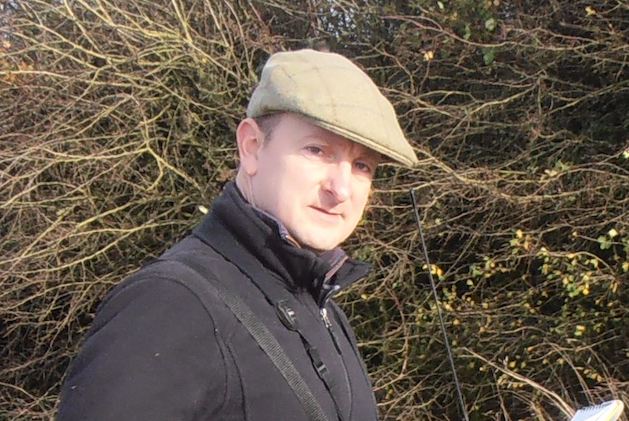
Dr Roger Draycott (RD), Head of Advisory for the GWCT
Is this the start of more regulation and do you think this will lead to compulsory licensing of released game birds across all of the UK?
(RD) Recently GWCT published 12 principles of sustainable gamebird management. These are based on GWCT science, practical game management and they are aligned with the Bern Convention’s Charter on Hunting and Biodiversity. They are supported by all the shooting organisations. If we can encourage sector-wide uptake of these principles and effectively self-regulate, then, I believe, many of the pressures facing game management would reduce significantly. If we don’t have effective self-regulation within the sector then yes, then this new licensing system could be the thin end of the wedge. We have an opportunity to demonstrate the enormous benefits that well run shoots can offer for the environment, rural economies and social well-being, lets grasp it!
(JM) DEFRA/NE are charged with protecting and enhancing our biodiversity. Shooting is shown as a great way to protect and enhance biodiversity. Wild Justice also claim this is their aim. On paper at least, it seems everyone is aiming for the same thing. Surely therefore, the £40K raised by WJ for legal fees, the £20K spent by NE/BASC on the Review that I co-authored with Rufus Sage of the GWCT and the unknown amount spent by DEFRA on their consultation and legal proceedings could have been spent far more profitably on either answering some of the outstanding questions about the environmental impacts of releasing, or in practical conservation action. Both the Reviews carried out by NE/BASC and one by the RSPB clearly demonstrated gamebird releases can motivate land management that delivers ecological benefits. DEFRA acknowledges this repeatedly, so I suspect they would be loathe to bring in regulations that reduced these. They also calculate that more regulation could cost up to £500K and require 15 people to operate.! However, the Reviews also show that gamebirds can cause direct damage where they are released and DEFRA are obliged to act to reduce this. I would take this set of measures as a shot across the bow from the Ministry. DEFRA has proposed a series of measures they consider balance costs and benefits, which appear to be straightforward to comply with. It seems that, for WJ and their supporters, these measures don’t go far enough and they indicate they will continue to challenge them: To refute such challenges there will need to be some fairly rapid field studies conducted. This can most effectively be done in collaboration with shoots and there is an obvious advantage to that work being conducted ‘in-house’ so shoots should be willing to assist GWCT in hosting such work or providing data when requested. The future is in the hands of shoots now. To avoid further regulation, shoots need to view these measures as a stern warning from DEFRA. Will Shooting seize on this as an opportunity to correct any bad practice, ensure compliance with monitoring regulation and even entirely reconsider their release practices so that they can be confident that they have only positive consequences? If this is achieved then we will see that shooting can deliver net ecological benefits by maximising the positive actions such as habitat conservation and support for non-game wildlife, while refining management practices to reduce the damage that released birds can cause. We could have woodland and farmland where shooting occurs teaming with wildlife and bucking the dismal national trend of biodiversity collapse. This would make DEFRA happy. It would make shoots with affection for the land that they manage happy. It may even make WJ happy!
Related Articles
Get the latest news delivered direct to your door
Subscribe to Shooting Times & Country
Discover the ultimate companion for field sports enthusiasts with Shooting Times & Country Magazine, the UK’s leading weekly publication that has been at the forefront of shooting culture since 1882. Subscribers gain access to expert tips, comprehensive gear reviews, seasonal advice and a vibrant community of like-minded shooters.
Save on shop price when you subscribe with weekly issues featuring in-depth articles on gundog training, exclusive member offers and access to the digital back issue library. A Shooting Times & Country subscription is more than a magazine, don’t just read about the countryside; immerse yourself in its most authoritative and engaging publication.



